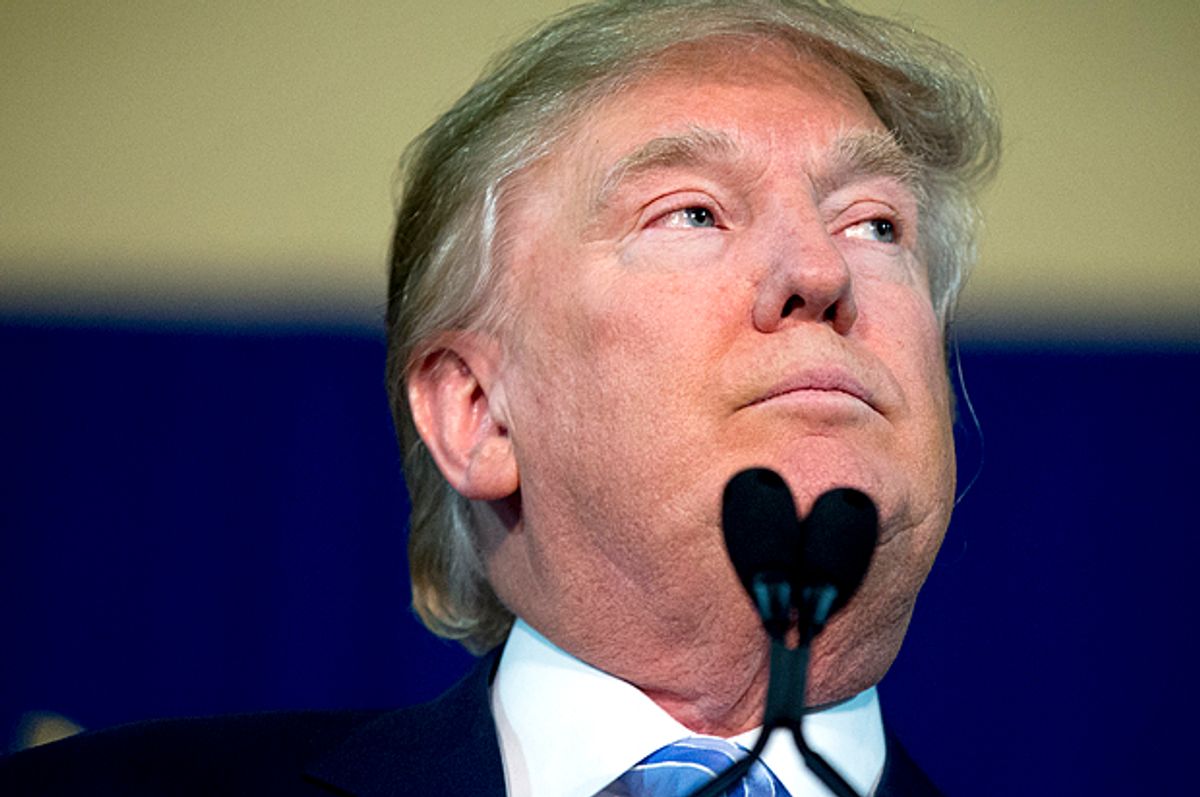The war on cops. Muslims out to destroy the West. Mexicans crossing the border seeking opportunity—the opportunity to murder. Last night, Donald Trump stage-managed growing public fear into a phantasmagoria of televised doom. As Rudy Giuliani, growing angrier as he drifts further from power, put it, “The vast majority of Americans today do not feel safe.”
It’s true. But what he didn’t say is that it is in large part because of scaremongering perpetuated by people like Giuliani. Last night’s message wasn’t about context but rather a call for mass catharsis: Make America Safe Again.
If much political violence aims to convey a message to a broad audience, then the military-vet-turned cop killers and disaffected ISIS freelancers have found one — as Trump, time and again, finds his own—on national television and the internet. Though Trump’s clinical narcissism and peculiar business record make him a unique figure, his pronouncements on law and order recycle long-held tenants of the American right wing that have for decades defined American politics for both major parties.
In 1968, George Wallace, mounting a far-right threat to a Republican president-to-be who unsubtly dubbed the right to be free from violent crime “the first civil right,” suggested that he would deploy bayonetted troops to keep peace on the streets of Washington, and lamented that liberals had upended the moral order by making cops out to be the criminals.
“If you walk out of this hotel tonight and someone knocks you on the head, he’ll be out of jail before you’re out of the hospital, and on Monday morning, they’ll try the policeman instead of the criminal,” he said.
Spiro Agnew, then the governor of Maryland, was said to have caught Nixon’s eye after he condemned mainstream black leaders for coddling the militants he blamed for Baltimore’s riots. Paul Manafort, Trump’s campaign chairman, said that Trump has been studying Nixon’s convention speech.
“I think what Nixon understood is that when the world is falling apart, people want a strong leader whose highest priority is protecting America first,” Trump said recently, according to the New York Times. “The ’60s were bad, really bad. And it’s really bad now. Americans feel like it’s chaos again.”
Law and order expresses itself through white identity politics as a racial policy. But it also stems from more general turmoil, from anti-war protest and generational (and gender) change in the 1960s to economic crisis and demographic (and gender) shifts today. Law and order isn’t just a policy but also a readymade narrative for Americans looking for explanations in complicated times. Now, the demand for answers comes fast as social media churns and the status quo of American politics has been exploded. Masters of chaos step into the void.
Last October, Gallup reported that 70-percent of Americans believed that crime was up even though crime has precipitously dropped in recent years and remains relatively low. Terrorism dominates the public discussion even though more people died from it in the 1970s, according to one count, than in the decade and a half between September 11th and August 2015. Many more Americans continue to die from a laundry list of other causes, most certainly including Americans shooting one another. Americans see the West under fire even though the vast majority of ISIS victims live elsewhere—say, in the vicinity of Iraq, where the United States invasion directly led to the creation of ISIS.
In the twilight of empire, a carceral state can no longer manage widespread inequality and exclusion as business as usual at home. People are reckoning not only with the loss of individual jobs but with the loss of entire ways of living and working. Death rates among poor white people are skyrocketing thanks to misery nursed with alcohol and opiates. Black people, angry over police brutality and mass incarceration that persist under a black president, are protesting in the streets. Police officers are being assassinated. The majority of Americans dislike both of the major party’s presumed candidates.
The crisis is here but its interpretation is up for grabs. The law and order narrative is one meant not only to stifle criticism of the criminal justice system but to make believe that an imaginary past, animated by the security blanket of white supremacy, will make us safe and prosperous. It won’t. In short, racism holds the system together. Many whites, fearful of decline, are embracing reaction. Young people, protesting in the streets and voting for a septuagenarian socialist, show that they don’t have to—and that in the future, a majority will not.



Shares